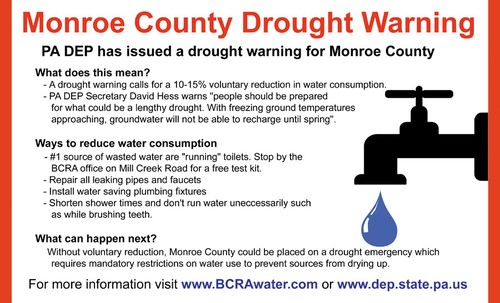Time for some UK praise of beaver gifts. I’ll be so wistful when they finally make the right decision. It’s wonderful to see articles like this in the Guardian.
Meet the latest recruit to the UK flood defence team: the beaver
 Beavers could be put to work building dams to stop a village from flooding in the Forest of Dean, in what would be the first such scheme on government land.
Beavers could be put to work building dams to stop a village from flooding in the Forest of Dean, in what would be the first such scheme on government land.
The Forestry Commission has been an enthusiastic advocate for the release of a family of beavers into a large fenced area surrounding Greathough brook above the village of Lydbrook, on land owned by the commission.
Experts predict that the beavers will rapidly create dams, canals and ponds, slowing the stream’s flow and potentially holding back 6,000 cubic metres of water to prevent huge floods inundating Lydbrook, a village that suffered badly from flooding in 2012.
Villagers are mostly supportive, hoping the scheme will not only protect the village but boost local wildlife and tourism. “It’s a brilliant idea,” said Stuart Aken. “There were about 100 people in the village hall when they made the announcement and there wasn’t a single dissenting voice. People are in favour because of the potential to help against flooding and most are interested in the increase in wildlife that it will bring to the area.”
Everyone seems excited about the day, what’s the hold up?
But despite the beaver scheme not costing the taxpayer a penny – it would be funded by landfill taxes – it was abruptly postponed last month. A source close to the project said it had been blocked by a minister in the Department for Environment, Food and Rural Affairs – and the Forestry Commission was “hopping mad”.
A spokesperson for Defra denied that the scheme had been blocked by a government minister and said that the Forestry Commission would announce the next steps in the coming weeks.
Derek Gow, a beaver expert who has worked on reintroductions in Scotland and England, said: “This is a tremendous opportunity. The science suggests these animals will hold back 6,000 cubic metres of water.
“This has the potential to prevent a once-in-30-years flood event. These animals will also open the forest canopy to light and create a biodiversity jewel in this forest.”
This “natural” flood defence works only in small streams in upland areas. In deeper rivers, beavers do not need to rapidly create dams. In lowland areas, beaver activity can also cause flooding.
But those in favour of their reintroduction to England and Wales say beavers can be returned to western river systems and will not spread to low-lying eastern areas, such as the Fens, where their activity could cause valuable agricultural land to flood.
Ahhh what a fine article! Where to begin? You have such great beaver advocates in the UK. But did someone really say that beavers would not spread and populate themselves into low-lying areas? I hate to break it to you but (ahem) beavers are very good at finding their way into new territory. It’s what they do. Their raison d’être , so to speak. I just don’t think it’s a great idea to tuck in the unsuspecting British population with cozy dreams of beavers who always stay where you put them. I agree about flooding. And I agree 100% with the lovely statement that “they’ll make a biodiversity jewel in the forest”.
But I wouldn’t say they won’t relocate. Never make promises beavers can’t keep.
I’m sure whoever said that it wasn’t Derek Gow, who is as fine an advocate as beavers could ever hope for. Looks like he’s giving a talk soon to spread the beaver gospel even farther.
Cheshire Wildlife Trust to stage beaver talk at Bickley Hall Farm

Several reintroductions of beavers are now either underway or being researched across the UK including in Scotland, Dorset and Wales.
A growing body of evidence suggests beavers have a key role to play in restoring nature in our countryside. They are a native species, which was hunted to extinction in the UK 400 years ago. They are a keystone wetland species, known for their dam building and tree-felling activity. This not only creates their home, but also provides the ideal habitat for many other plant and animal species and can play a role in flood prevention.
Derek Gow is at the forefront of beaver re-introduction and will be joining us to tell the story of the beaver comeback in the UK, sharing his experiences of the projects he has worked on along the way. His talk ‘The Return of the Beaver to the UK’ will be held at 7.30pm on Thursday September 28 at Bickley Hall Farm, Malpas, Cheshire, SY14 8EF.
Don’t you wish you could be there? I sure do! Derek is as fine a spokesmen as beavers could ask for and I know they have ever confidence in his work. Why just yesterday I found an awesome wetland illustration and was confused by one creature in the bottom right hand corner. He clarified helpfully that it was a water vole, and very common in England. Oh, and of course you know he came to Martinez after the beaver conference right? Because it turns out we are a kind of beaver Mecca too.







.jpg) ts in Upper Lydbrook and Lydbrook how experts believe putting beavers into Greathough Brook in the Forest could help halt water gushing down the hillsides.
ts in Upper Lydbrook and Lydbrook how experts believe putting beavers into Greathough Brook in the Forest could help halt water gushing down the hillsides. “Beavers have been managing water for millions of years; they’re adapted to do a far better job than us,” he said. “We can no longer pay to maintain flood walls and flood defences so beavers are a rational option when it comes to water management and flood control.”
“Beavers have been managing water for millions of years; they’re adapted to do a far better job than us,” he said. “We can no longer pay to maintain flood walls and flood defences so beavers are a rational option when it comes to water management and flood control.”.JPG) w of water which can lead to flash flooding.
w of water which can lead to flash flooding.
 Full credit to the author of the article for using an actually new pun. “Gnawty or Nice” amuses me. Stroud Township is in Monroe county in Pennsylvania. It is one of the counties stricken by drought, although they apparently don’t want any beaver dams saving their remaining water though. Beavers are rascals. Any amusement leftover from the very rare new pun in this story is directed to the public works crew who will be “Investigating multiple factors”to determine
Full credit to the author of the article for using an actually new pun. “Gnawty or Nice” amuses me. Stroud Township is in Monroe county in Pennsylvania. It is one of the counties stricken by drought, although they apparently don’t want any beaver dams saving their remaining water though. Beavers are rascals. Any amusement leftover from the very rare new pun in this story is directed to the public works crew who will be “Investigating multiple factors”to determine 
 prairie wildlife. His glorious work has been featured in books and shown in National Geographic and PBS.
prairie wildlife. His glorious work has been featured in books and shown in National Geographic and PBS.


 It might take a moment to adjust to his Cornish accent, but the whole 15 minute interview is very, very good. I got especially fascinated by his discussion of the species that suffered when beavers were removed from the landscape. At around 2:13 he talks about the Large Copper Butterfly that relied as catapillars on the coppiced willow trees at the edge of forests beavers once provided that never really recovered from their removal. Next he talks about the Bearded Tit which feed their youngsters on the larvae from flooded reed beds that rarely occur in the absence of beavers. It made me realize what an incredible numbers of species beaver ponds affect that we never even consider.
It might take a moment to adjust to his Cornish accent, but the whole 15 minute interview is very, very good. I got especially fascinated by his discussion of the species that suffered when beavers were removed from the landscape. At around 2:13 he talks about the Large Copper Butterfly that relied as catapillars on the coppiced willow trees at the edge of forests beavers once provided that never really recovered from their removal. Next he talks about the Bearded Tit which feed their youngsters on the larvae from flooded reed beds that rarely occur in the absence of beavers. It made me realize what an incredible numbers of species beaver ponds affect that we never even consider.




































